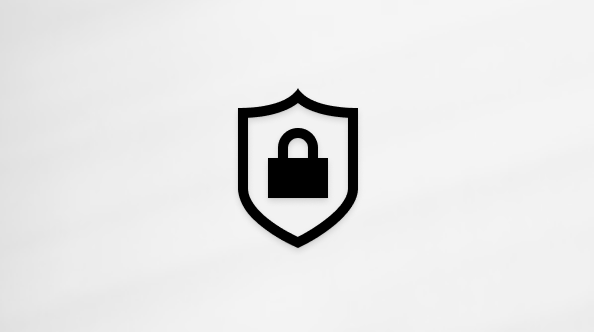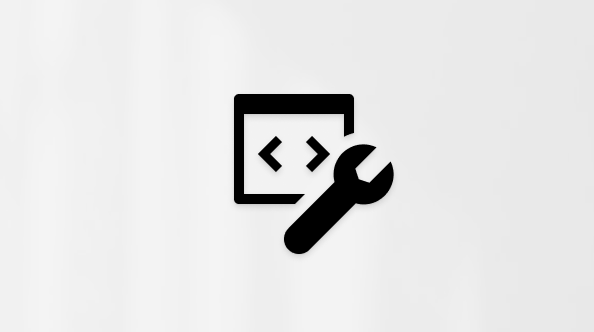Share and access another person's mailbox or folder in Outlook
Applies To
Outlook for Microsoft 365 Outlook 2024 Outlook 2021 Outlook 2019 Outlook 2016 Outlook Web App for Office 365 Outlook Web App for Office 365 Small Business Outlook on the web New Outlook for Windows Outlook Web AppYou can access another person’s mailbox if you have been granted the appropriate permissions to their mailbox. Permissions can range from read-only to creation, deletion, and allowing responses to messages.
Note: The steps in this article describe sharing the mailbox or folder associated with your email account. If you want to create a single mailbox that can be accessed by one or more people, see Open and use a shared mailbox in Outlook.
What to consider when sharing a mailbox or folder
When sharing the mailbox or folder associated with your email account, you need to consider how you want the people you invite to interact with your mailbox.
-
Invitees respond as themselves: A manager needs an assistant or colleague to monitor a specific folder in his or her mailbox while they're away. In this scenario, the manger grants the assistant or colleague permission to respond to messages, but responses to messages in that mailbox or folder will show as coming from the invitee's email account.
-
Invitees respond on your behalf (also known as delegate access): A manager needs an assistant or colleague to monitor and respond to email on his or her behalf. In this scenario, the manager grants the assistant or colleague permissions to access their folder or mailbox, but when the invitee responds to messages, their responses are shown as: <invitee> on behalf of <manager>. This type of sharing requires Delegate access permissions. For help with setting up delegate permissions, see Allow messages to be sent on your behalf when sharing a folder or mailbox.
Note: Sharing folders or mailboxes can only be done using work or school account with qualifying Microsoft 365 subscriptions, or work or school accounts hosted by Exchange Online.
Select a tab option below for the version of Outlook you're using. What version of Outlook do I have?
Share mailboxes or folders without delegate access
Note: If the steps under this New Outlook tab don't work, you may not be using new Outlook for Windows yet. Select the Classic Outlook tab and follow those steps instead.
Share and access a folder or mailbox in new Outlook
There are two ways to interact with shared folders: the mailbox owner who wants to share one or more folders or share their entire mailbox. The invitee, the person that the owner invited to share their folder or mailbox.
-
Owner of folder or mailbox: As the mailbox owner you decide to share your entire mailbox or one or more folders with others. To do this, you first set up the appropriate permission levels for those you want to share the folder with, and then you send an invitation.
-
Invitee: When someone shares a folder or mailbox with you, you'll receive an invitation to share their folder or mailbox. When you accept the invitation, the folder will appear in your folder pane. What you do with this shared folder, depends on the level of permissions the owner granted you.
Owner steps:
How to select and share the folder or mailbox with others
To share one or more folders or to share your entire mailbox with others in your organization, follow these steps:
-
In new Outlook, navigate to the folder you want to share.
-
Right-click on the folder and choose Sharing and permissions.
-
In the Permissions for the folder window, if the person isn't already included in the list of people you're sharing with, select

-
Enter the name or email address of the person you're giving permission to, and then select Add.
-
From the list of names on the Permissions for the folder window, select the name of the person you just added.
-
In the Permissions section, select the Permission level dropdown and select the permissions you want to grant to this user. If you're not sure what permission level to select, see the section below Understand sharing permissions.

-
Confirm the sharing settings and click OK. The person you're sharing with will receive an email to let them know you shared a folder with them.
Tip: If you want to share a subfolder you need to follow the same process, but also share the parent folder(s).
How to remove sharing privileges
-
In new Outlook, navigate to the folder you're sharing.
-
Right-click the folder and choose Sharing and permissions.
-
Select the person you're sharing with, and then select Delete icon.
Invitee steps:
Accept and view a folder or mailbox shared with you
When someone shares a folder with you an email is sent to let you know. You can now add this to your folder pane so you can access it in new Outlook.
-
In the folder pane, right-click Shared with me.
-
Select Add shared folder or mailbox.
-
Enter the email address or name of the person that shared a folder with you and click Add.
-
The name of the person will appear under the node Shared with me. Expand the node to view all folders that person shared with you.
Remove the shared folder or mailbox from your folder pane
If you decide that you no longer want to see the other person’s mailbox or folder every time you open new Outlook, right-click the folder, and select Remove shared folder.
Understand sharing permissions
When you share a folder, you can set permissions that define what each user who accesses the folder can do. Selecting an option from the Permission level dropdown, triggers the selection of Read, Write, Other, and Delete access permissions. The screenshot to the right, shows what level of permissions are automatically chosen when selecting a Permission level of Publishing editor.
Tip: If you remove one of those checkboxes associated with a permission level, the level changes to Custom.

The table below details the type of actions the invitee can do depending on the Permission level set.
|
Permission level |
Activities that an invitee can perform |
|---|---|
|
Owner |
Create, read, modify, and delete all items in the shared folder. As an owner, a user can change the permission levels that others have for the folder. |
|
Publishing Editor |
Create, read, modify, and delete all items, and create subfolders. |
|
Editor |
Create, read, modify, and delete all items. |
|
Publishing Author |
Create and read items, create subfolders, and modify and delete items that you create. |
|
Author |
Create and read items, and modify and delete items that you create. |
|
Nonediting Author |
Create and read items, and delete items that you create. |
|
Reviewer |
Read items only. |
|
Contributor |
Create items only. |
|
None |
Can't perform any activity. The user remains on the permissions list, but has no permission and can't open the folder. |
|
Custom |
Perform activities specifically defined by the folder owner. |
Owner of folder or mailbox: Grant permissions to a folder
-
In classic Outlook, in the Folder Pane, right-click the folder you want to share, and then select Properties.
-
To find the users or contact groups you want to share the folder with, on the Permissions tab, under Permissions, select Add.
-
In the Global Address List, select the users and contact groups you want, clicking Add after selecting each one. As you add users or groups, they appear in the box to the right of the Add button. When you're finished adding users, click OK.

-
Select the user you want to share with, and choose permissions level from the dropdown list.
-
Permissions descend from Owner, with all the rights, to Contributor, with the fewest rights.
-
After you choose a permissions level, you can fine-tune the permissions by selecting buttons or checking and unchecking boxes. If you do that, the Permission Level for the user or group will change to Custom.
In the example shown here, Diane and Kim have the built-in Author and Publishing Editor permission levels. Vernon was assigned to the Editor level, which was then customized to allow him to delete his own items.

-
Set different permissions for other users or groups by repeating steps 2 through 6.
-
Click OK.
Invitee: Access another person’s folder or mailbox in classic Outlook
If you're using classic Outlook, the mailbox you were granted access to automatically displays in your folder list. In the example below, Adam Barr was granted access to the mailbox of Kim Akers. Kim’s mailbox displays automatically in Adam’s folder list.
Note: If you were recently granted access to the mailbox, it may take a few hours for the other user’s mailbox to display in your folder list.

What you can do in this mailbox depends on the permission levels you were granted by the person sharing their mailbox with you.
Share and access a folder or mailbox in Outlook on the web
There are two ways to interact with shared folders: you can be the owner of a mailbox who wants to share one or more folder or their entire mailbox.
-
Folder or mailbox owner: You own the folder and decide to share it with others. You set the appropriate permission levels for those you want to share the folder with.
-
Invitee: When someone shares a folder or mailbox with you, you'll receive an invitation to share a folder. When you accept the invitation, the folder appears in your folder pane. What you can do in a shared folder, depends on the permission levels set.
Owner of folder or mailbox: Share a folder or mailbox with others
To share one or more folders or to share your entire mailbox with others in your organization, follow these steps:
-
In Outlook on the web, navigate to the folder you want to share.
-
Right-click on the folder and choose Sharing and permissions.
-
In the Permissions for the folder window, if the person isn't already included in the list of people you're sharing with, select

-
Enter the name or email address of the person you're giving permission to, and then select Add.
-
From the list of names on the Permissions for the folder window, select the name of the person you just added.
-
In the Permissions section, select the Permission level dropdown and select the permissions you want to grant to this user. If you're not sure what permission level to select, see the section below Options for sharing a folder.

-
Confirm the sharing settings and click OK. The person you're sharing with will receive an email to let them know you shared a folder with them.
Tip: If you want to share a subfolder you need to follow the same process, but also share the parent folder(s).
Owner of folder or mailbox: Remove sharing privileges
-
Navigate to the folder you're sharing.
-
Right-click the folder and choose Sharing and permissions.
-
Select the person you're sharing with, and then select Delete icon.
Invitee: Accept and view a folder or mailbox shared with you
When someone shares a folder with you an email is sent to let you know. You can now add this to your folder pane in Outlook on the web, so you can access.
-
In the folder pane, right-click Shared with me.
-
Select Add shared folder or mailbox.
-
Enter the email address or name of the person that shared a folder with you and click Add.
-
The name of the person will appear under the node Shared with me. Expand the node to view all folders that person shared with you.
Invitee: Remove the shared folder or mailbox from your folder pane
If you decide that you no longer want to see the other person’s mailbox or folder every time you open Outlook on the web, right-click the folder, and click Remove shared folder.
Options for sharing a folder
When you share a folder, you can set permissions that define what each user who accesses the folder can do. Selecting an option from the Permission level dropdown, triggers the selection of Read, Write, Other, and Delete access permissions. The screenshot to the right, shows what level of permissions are automatically chosen when selecting a Permission level of Publishing editor.
Tip: If you remove one of those checkboxes associated with a permission level, the level changes to Custom.

The table below details the type of permission granted depending on the Permission level you set.
|
Permission level |
Activities that a sharing user can perform |
|---|---|
|
Owner |
Create, read, modify, and delete all items in the shared folder. As an owner, a user can change the permission levels that others have for the folder. |
|
Publishing Editor |
Create, read, modify, and delete all items, and create subfolders. |
|
Editor |
Create, read, modify, and delete all items. |
|
Publishing Author |
Create and read items, create subfolders, and modify and delete items that you create. |
|
Author |
Create and read items, and modify and delete items that you create. |
|
Nonediting Author |
Create and read items, and delete items that you create. |
|
Reviewer |
Read items only. |
|
Contributor |
Create items only. |
|
None |
Can't perform any activity. The user remains on the permissions list but has no permission and cannot open the folder. |
|
Custom |
Perform activities defined by the folder owner. |










